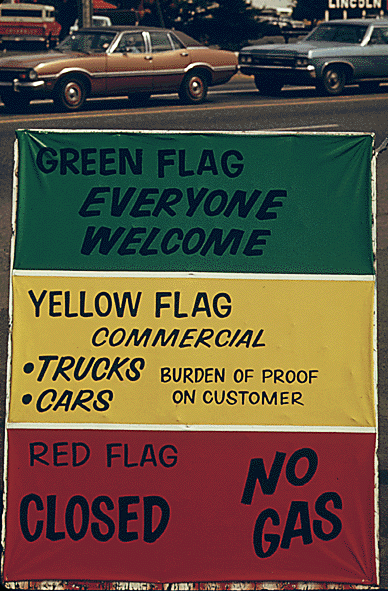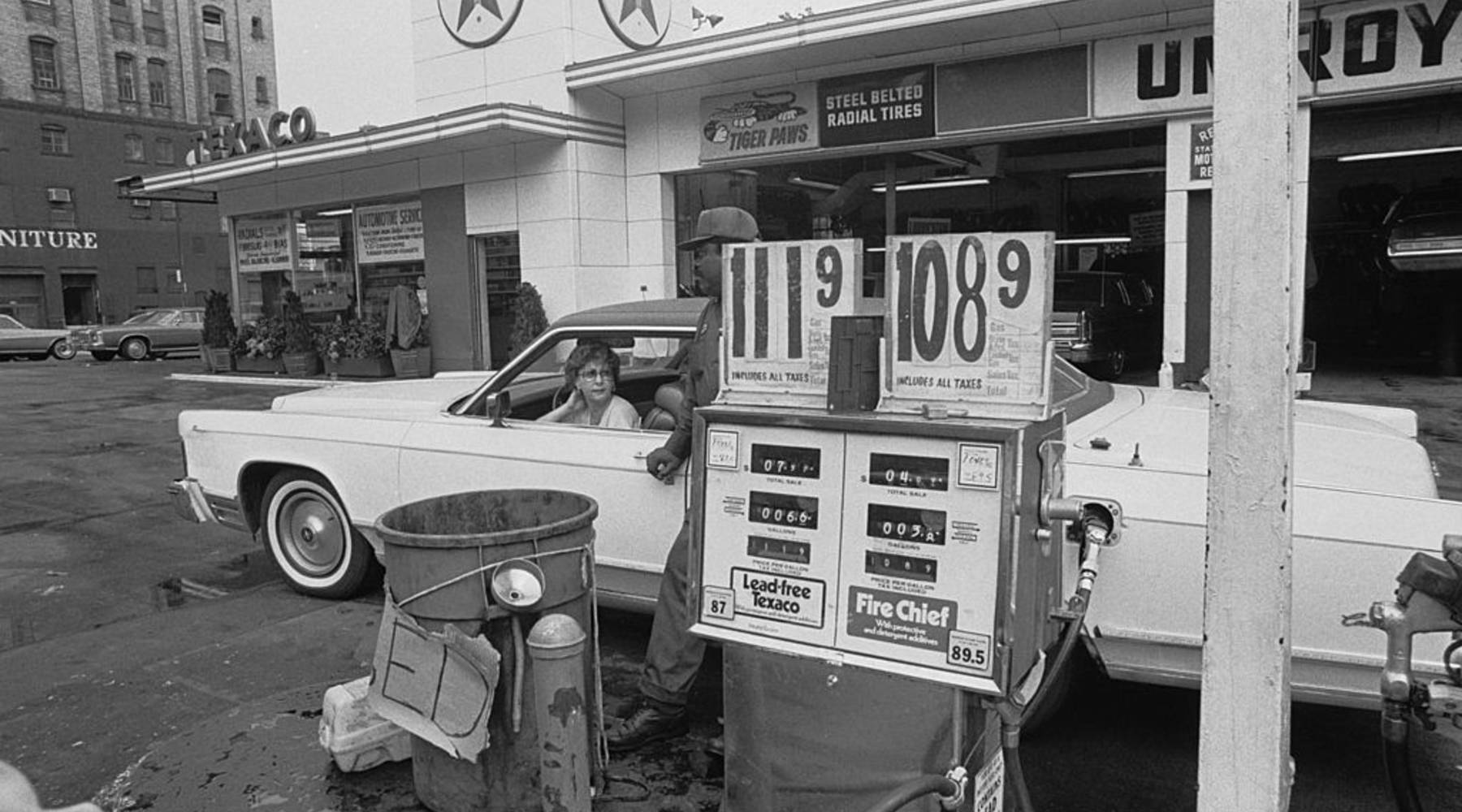1970 OIL PRICE SHOCK
Oil price shocks exchange rate and economic growth in nigeria. The contents of this paper should be able to help you in generating new ideas and thoughts for your own research.
Photos Oil Crisis In The 1970s
Beyond the oil crisis rising energy costs were only one manifestation of the great inflation that ripped through the economies of the West during the 1970s.
. Given this richer case history we are arguably in a better position than two. First it gave confidence and power to many OPEC governments to take control of their oil resources either by outright nationalisation like Iraq or by participation phased buy-out as in the case of Saudi Arabia. To many observers at the time the rise of the Organization of Petroleum Exporting Countries and the economic turmoil that surrounded it.
17 ScopeLimitations of the study. The paper should be used as a guide or framework for your own paper. At their peak real oil prices stood about 50 above their.
2 The United States was the worlds dominant oil producer at that time and it regulated prices. Oil Prices in the 1960s and 1970s Global oil prices in the 20th century generally ranged between 100 and 200 per barrel b until 1970. Shaken in the 1970s by an upheaval in international petroleum mar kets.
The dollar price of oil rose fivefold with spot prices briefly hitting 145barrel. 17 SCOPE OF THE STUDY. This study is concerned with oil price shock in Nigeria.
The analysis covers the period from 1970 to 2014 within which occurred many oil market equilibrium-disturbing events. A group of small oil-producing nations in the Middle East en gineered two momentous price shocks in 1973-74 and 1979. This drastic change in the value of the dollar is an undeniably important factor in the oil price increases of the 1970s.
Due to the ending of the Bretton Woods agreement which had pegged gold to a price of 35 the price of gold rose to 455 an ounce by the end of the 1970s. Oil shocks redux. During the twin oil shocks of 1973 and 1979 oil supplies dropped and prices soared and the average citizen understood the energy crisis to mean a panic at the pump the fear that we would not.
The price of oil quadrupled by 1974 from US3 to nearly US12 per 42 gallon barrel 75 per cubic meter equivalent in 2018 dollars to a price rise from 17 to 61 per barrel. Although there were several other factorssuch as prior overheating in many. Even adjusting for inflation the rise in oil prices was stunning.
The macroeconomy there have been a number of new oil price shocks since the 1970s notably the 1986 collapse of oil prices and the 2000 boom in oil prices as well as the oil price increases associated with the 1990-1991 Gulf war and the 2003 Iraq war. Increase in oil prices in the late 1970s the average Euro 11 unemployment rate had risen from 28 in 1973 to 57 in 1979 and inflation was still hovering at a high level. This study is concerned with oil price shock in Nigeria.
The graph shows the estimated net reduced form effect of an oil price shock on output and prices together with 90 statistical confidence intervals. The analysis covers the period from 1970 to 2014 within which occurred many oil market equilibrium-disturbing events. 1973-74 Oil Crisis.
The crisis eased when the embargo was lifted in March 1974 after negotiations at the Washington Oil Summit but the effects lingered throughout the 1970s. It changed the world in a number of important ways. Expansion of government spending on social programs and the war in Vietnam.
There were dramatic slowdowns in real activity and accelerations in inflation. In the early 1970s a sharp spike in the world price of oil was followed by a period of significant economic dislocation in many industrial countries. Domestic oil was plentiful.
This time after the oil price shock the average CPI in the Euro 11 increased by 27 percentage points between 1979 and 1980 to stand at 125 on average in 1980. The early 70s oil shock happened after two decades of stable low-price oil. Low interest rates established by the Federal Reserve Board which encouraged more borrowing by businesses.
Between October 1973 and January 1974 world oil prices quadrupled. From the end of 2002 to the middle of 2008 the US economy was in the throes of a significant oil price shock. An empirical investigation 1970-2010.
Prices rose for several reasons. Oil prices have risen sharply over the last year leading to concerns that we could see a repeat of the 1970s when rising oil prices were accompanied by severe recessions and surging inflation. By putting an end to decades of cheap energy the 1973-74 oil crisis which was led by Arab members of the Organization of Petroleum Exporting Countries OPEC exacerbated the economic difficulties facing many industrialized nations forced developing.
This Economic Letter examines the historical relationship between oil price shocks and inflation in light of some recent research and goes on to discuss what the recent. Thats about 10b to 30b when adjusted for inflation.

Energy Crisis National Museum Of American History
Oil Shock Of 1978 79 Federal Reserve History

Pin By Ditrnm On 1973 Oil Embargo Energy Crisis Gas

Oil Crisis Of The 1970s Energy Education

The 1973 Arab Oil Embargo The Old Rules No Longer Apply Parallels Npr

How An Oil Shortage In The 1970s Shaped Today S Economic Policy Marketplace

The 1973 Arab Oil Embargo The Old Rules No Longer Apply Parallels Npr


0 Response to "1970 OIL PRICE SHOCK"
Post a Comment